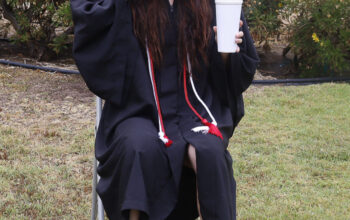Alyssa Wejebe
To a small child, the tanks holding performers at Sea World are massive, whole worlds onto themselves—but to the orcas and any other creatures of comparable size that reside in them, they are bathtubs. They swim around in them, several times over, with nowhere else to go, quickly exhausting all other possibilities for freedom. It simply is not enough space for such large marine animals, and on top of that, to be taught tricks for human entertainment—it is too much.
In light of the recent death at Sea World in Florida where the theme park’s large orca, Tilikum, killed a trainer, the idea of such large marine animals in captivity should be reconsidered. Massive creatures like orcas cannot be held captive in areas that are so restricted in comparison to what is natural for them, and then trained to perform tasks that serve merely to amuse people, even if it raises awareness of these animals.
Obviously, they can be released.
But even that is not so simple. Animals in captivity have likely grown used to having humans care for them. They cannot be immediately and carelessly released back into the wild, with the expectation that everything’s been neatly resolved.
For these animals, gradual assimilation can be tried. If people can teach them how to jump through hoops and flip on command, perhaps they can teach them the natural survival behaviors needed in the real world. That was the case according to an LA Times article reporting on the release of the killer whale star of “Free Willy,” Keiko.
However, what works for one animal may not work for all of them. Just like with other people, they have to be treated as individuals on a case-by-case basis, discovering the different needs and quirks unique to each of them.
Still, this should be remembered above all: after living under human care, even with every attempt at rehabilitation and assimilation, orcas and any other animal may never be able to fully rejoin the natural world. For example, despite every effort, a New Scientist article reports that Keiko was never really able to interact successfully with other wild orcas after the animal’s time in captivity.
Another obvious option: these creatures can be given more space. That is not a license to continue training them for entertainment and business purposes—that should stop, even when they are provided with more room.
Dr. Raymond Wells, professor of Marine Biology at Pierce, said that “dolphins seem to do fairly well in aquariums.” He explained that captivity and teaching dolphins to perform tricks for people is a good way of generating awareness. Wells said that without those tactics, people probably would not have cared about what happened to dolphins.
However, although orcas are a type of dolphin, Wells commented that they are “just too big for captivity.” He continued that part of the space issue is the fact that people cannot provide enough of it for the killer whales to live out their natural social structure.
Clearly, people could just give these animals a bigger area to actually live in and continue to care for them while trying to help them adjust to the wild. And under these circumstances, people can still be allowed to observe and learn about these magnificent creatures. Just seeing them live peacefully like this would be enough to raise their awareness and make them care about their fate. You do not have to make Orcas jump through hoops to make a person care whether they live or die.
For more information, the LA Times and New Scientist articles can be found here at http://latimesblogs.latimes.com/unleashed/2010/02/animal-activists-call-for-end-to-sea-world-captive-orcas-tilikum.html and http://www.newscientist.com/article/dn17039-why-freeing-willy-was-the-wrong-thing-to-do.html.


